
Roots
In the whispers of coiled strands and the defiant reach of every natural curl lies a heritage echoing through time. Textured hair, a crown bestowed by ancestry, carried histories long before the formal rise of any movement. For generations of Black and mixed-race people, hair served as a deep identifier, a living chronicle of belonging, status, and spirit. Yet, colonial incursions and the harrowing passage of slavery sought to sever these vital connections, imposing a worldview that deemed natural beauty unruly, untamed, and unacceptable.
The Afro movement, a powerful reawakening in the mid-20th century, did not merely introduce a hairstyle. Instead, it stirred dormant memories, reconnecting countless souls to an inherited pride, making visible what was once systemically suppressed. The movement reclaimed cultural heritage through adornment, profoundly reshaping identity from the very scalp outwards.
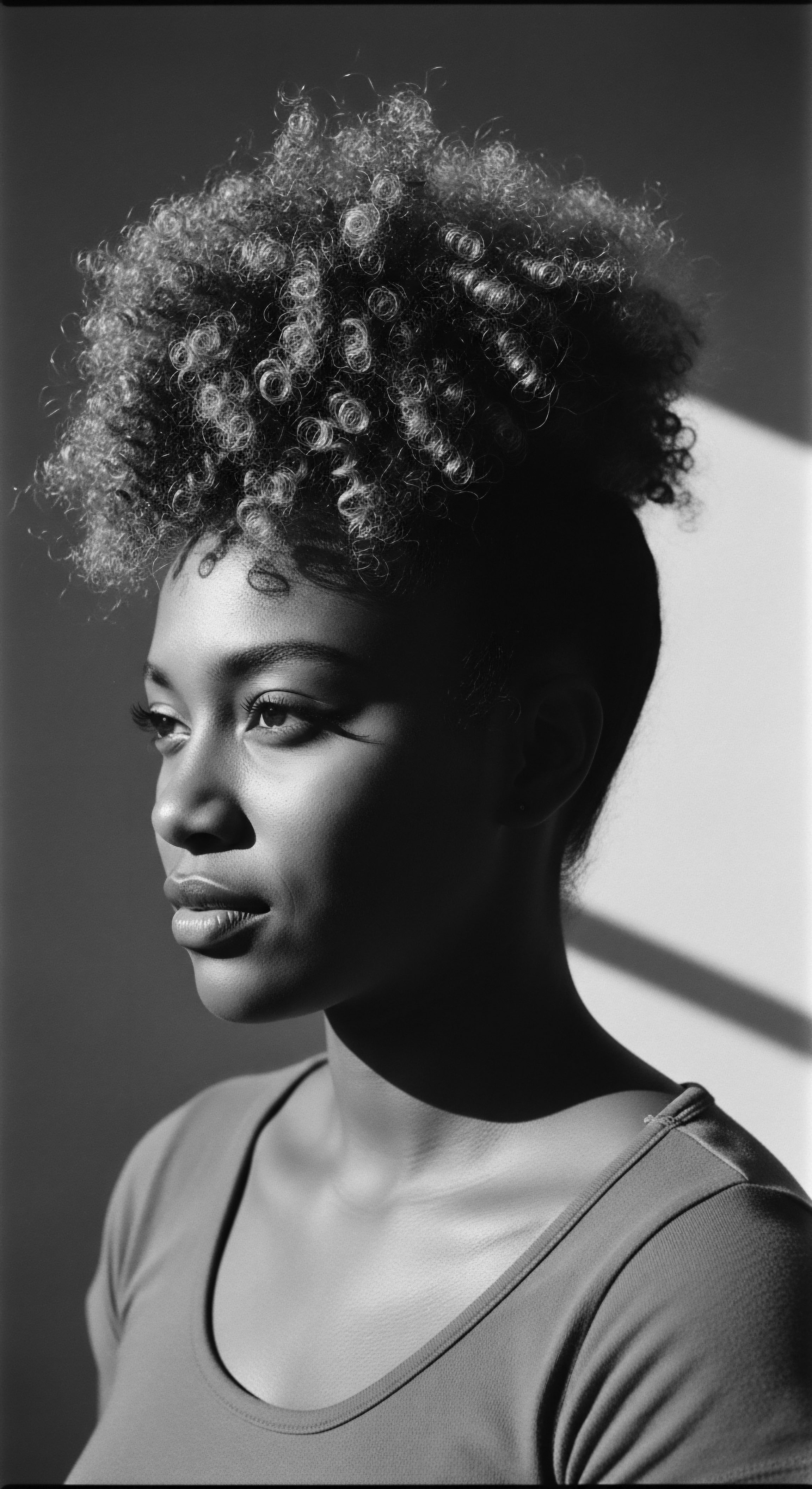
A Hair Legacy in Ancient Times
Across various ancient African societies, hair styling served as an elaborate language. From West Africa to the Nile Valley, a person’s coiffure could convey their tribal affiliation, age, marital status, social rank, and even their spiritual beliefs. The intricate patterns braided into hair were not random; they held specific cultural meanings (Afriklens, 2024). For instance, the Yoruba people of Nigeria used hairstyles to signify community roles, and the Himba tribe in Namibia covered their locs with red ochre paste to symbolize their connection to the earth and their ancestors.
Hair was considered sacred, a conduit to the divine, a vital part of self and connection to community. Its preparation was often a communal act, solidifying bonds between generations as knowledge and techniques passed from elder to youth (Noireônaturel, 2024). Such practices cemented hair’s role far beyond simple aesthetic; it was an active participant in daily life and ceremonial expression.
Hair became a primary visual language in many African societies, conveying deep personal and communal truths.
When the transatlantic slave trade began, this living heritage faced immense assault. Enslaved Africans often had their heads shaved upon capture, a brutal act intended to strip them of identity, culture, and humanity (ADJOAA, 2024). This forced erasure of a central cultural marker was a deliberate strategy to break connection to ancestral lands and traditions. Despite these efforts, resilience persisted.
Enslaved women, with quiet defiance, continued to braid hair, often incorporating grains for sustenance or weaving maps and escape routes into intricate patterns to aid freedom seekers (Copyright, 2022), This secret communication, hidden within publicly visible styles, underscores the enduring power of hair as a tool of survival and resistance even under extreme oppression. The very act of caring for textured hair, even with limited resources, became a subtle protest against attempts at dehumanization, a clinging to a cherished past. Sarah Heaton, referencing Diane Simon, notes that enslaved Africans used what little they had, such as soap and broken glass, to create styles, including celestial body designs, reflecting a desperate need for self-expression amidst collective trauma (Heaton, 2021). This deep history lays the groundwork for understanding the profound reclamation that the Afro movement would later spearhead.
The journey of textured hair through centuries of oppression led to a complex relationship within the diaspora, where Eurocentric beauty standards often dictated what was considered “presentable” or “good hair” (Essence, 2020). Chemical straighteners and hot combs, though providing a means of conformity and a semblance of acceptance in wider society, also imposed a physical and emotional toll, creating a divide between natural texture and desired appearance (Refinery29, 2021). This historical context highlights the societal pressures that the Afro movement would later confront and dismantle. The very structure of hair, its unique coil and curl, became a site of struggle, a tangible representation of systemic bias.
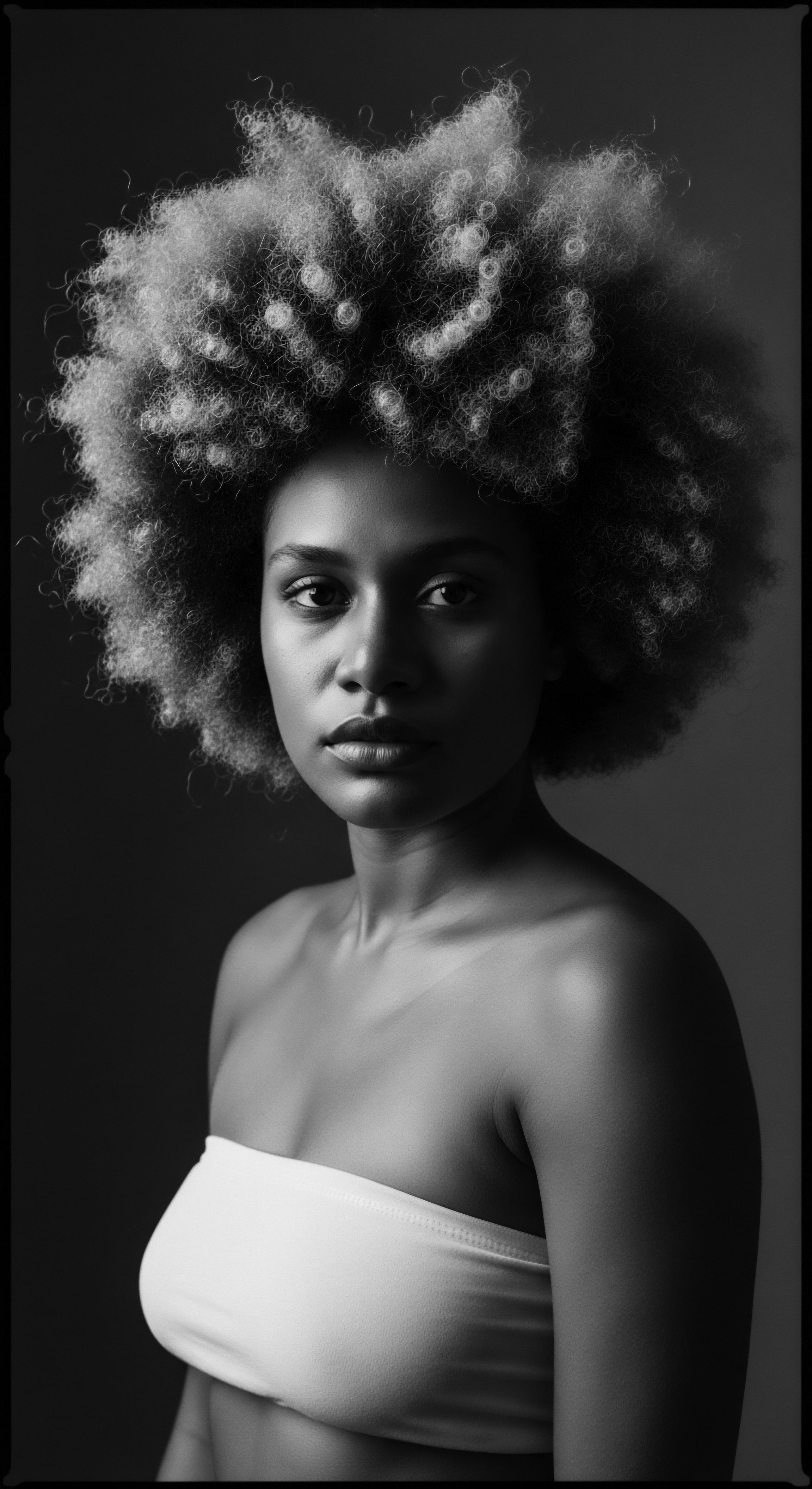
Hair Anatomy and Cultural Interpretation
The biological structure of textured hair, characterized by its elliptical follicle shape and varied curl patterns, results in its unique volume and spring. This natural geometry, often suppressed for centuries, became a symbol of ancestral beauty during the Afro movement. Understanding this fundamental biology helps one appreciate the historical context of styling practices. For instance, the natural propensity for coily hair to shrink when dry, often viewed negatively through a Eurocentric lens, became a celebrated attribute, a sign of vitality and defiance, a living crown reaching towards the sky.
Before the imposition of external beauty norms, African societies possessed their own sophisticated understanding of hair. The care rituals involved not merely aesthetics but also practical applications. Ancient Egyptians used alabaster or jasper rings in wigs, signifying wealth and status. In West Africa, traditional tools included carved wooden combs, which were not just functional but held symbolic value, often adorned with intricate designs (Africa Rebirth, 2022).
These tools, deeply integrated into community life, served to maintain the health and symbolic power of hair. The loss of these tools and traditional knowledge during the transatlantic slave trade left a void, forcing adaptation and survival with vastly different means, as enslaved individuals resorted to rudimentary methods for hair care. The Afro movement’s subsequent revival of tools like the Afro pick, a direct descendant of ancient combs, signifies a physical and cultural return to these foundational practices, connecting the modern movement directly to its roots.
| Region/Context West Africa |
| Adornment Practice Intricate braiding with beads, cowrie shells |
| Cultural Significance Identity marker for tribe, age, marital status (Afriklens, 2024), |
| Region/Context Southern Africa |
| Adornment Practice Ochre paste and decorative accessories on locs (Himba Tribe) |
| Cultural Significance Connection to earth, ancestors, wealth, and status (Afriklens, 2024), |
| Region/Context Ancient Egypt |
| Adornment Practice Alabaster, jasper rings in wigs |
| Cultural Significance Symbol of status and authority (OkayAfrica, 2018) |
| Region/Context Slavery Era Americas |
| Adornment Practice Braided patterns (covert) |
| Cultural Significance Secret communication, escape routes, preservation of identity (Copyright, 2022), |
| Region/Context Afro Movement |
| Adornment Practice Afro pick worn openly, voluminous natural hair |
| Cultural Significance Black pride, political statement, rejection of Eurocentric standards (EBONY, 2017) |
| Region/Context These practices illuminate a continuous thread of hair as a canvas for identity and resistance across African heritage. |
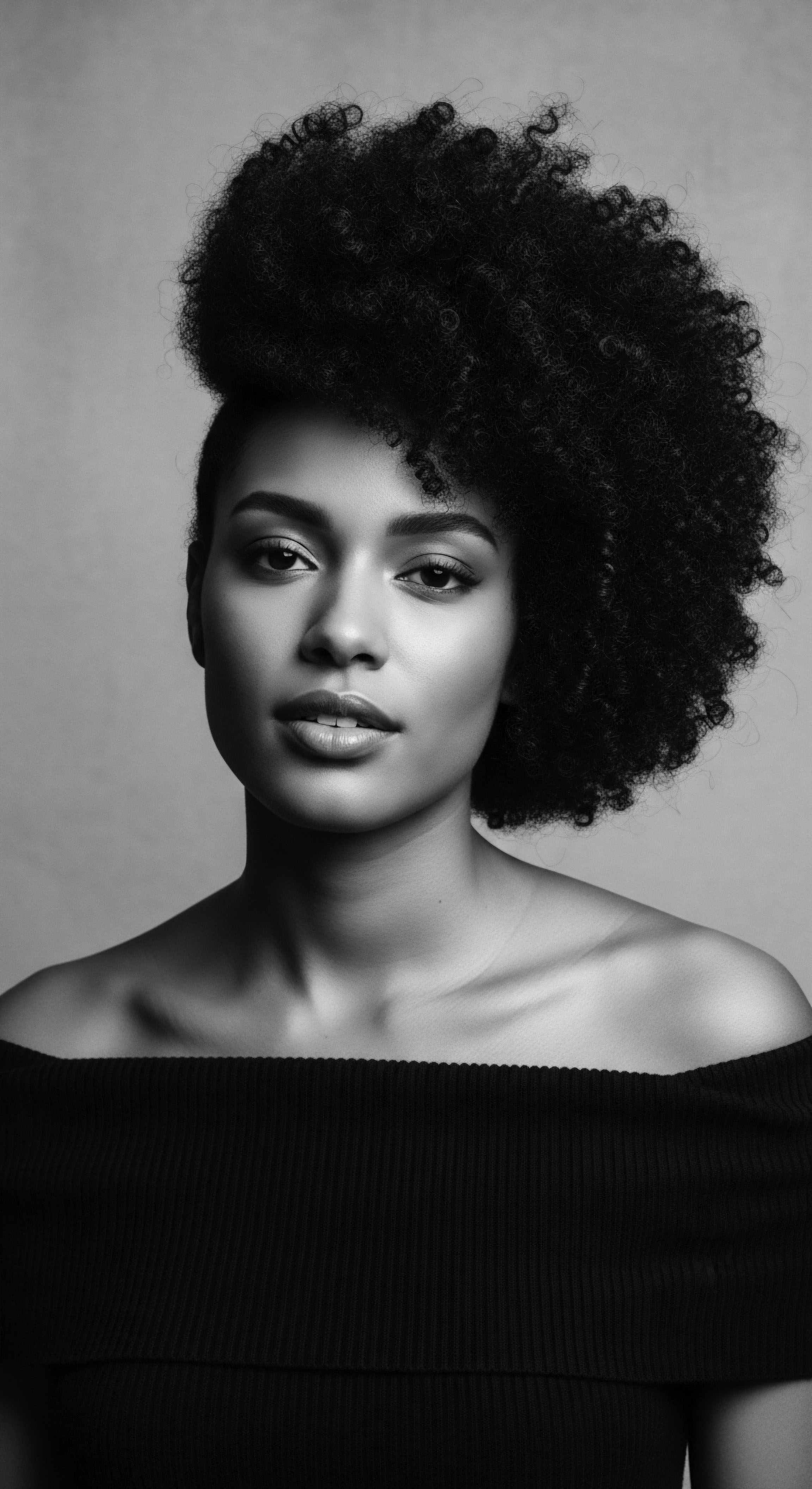
Ritual
The Afro movement’s reclamation of cultural heritage through adornment unfolded as a profound ritual, transforming external appearance into an internal assertion of self. This went beyond mere aesthetics, becoming a conscious act of reconnecting with ancestral practices and defying a imposed legacy of subjugation. The Afro, the pick, the beads, the braids—each became a visible declaration, a tangible representation of a heritage once deemed unacceptable. This ritualistic embrace of textured hair as a primary form of adornment marked a powerful shift in perception, both individually and collectively.
It served to mend the fractured relationship between identity and appearance, a consequence of centuries of oppression and imposed beauty norms. The public display of natural texture served as a daily affirmation, a reminder of strength and continuity.

Styling as a Rite of Reconnection?
For centuries, the systematic devaluing of Black hair coerced many to adopt styling practices aimed at mimicking European straight textures (ADJOAA, 2024). The invention of the hot comb and chemical relaxers, while creating economic opportunities for Black women like Madam C.J. Walker, also reinforced the notion that natural hair needed to be “tamed” (Essence, 2020), The Afro movement directly challenged this paradigm. It asserted that the inherent characteristics of textured hair held their own beauty, power, and dignity.
The conscious choice to wear an Afro, or any natural style, became a public rejection of assimilation and a proud assertion of heritage (Odele Beauty, 2021). Icons such as Angela Davis and the women of the Black Panther Party popularized the Afro, transforming it into a powerful symbol of Black pride and a political statement against Eurocentric beauty standards (Afriklens, 2024), This was not a passive trend; it was a deliberate, active participation in a larger cultural and political awakening.
The act of styling hair in its natural state, which had previously been met with discrimination and negative stereotypes, became a form of activism (colleen, 2023). For Black and mixed-race individuals, wearing an Afro meant standing in solidarity with a movement seeking liberation and self-determination. It communicated a refusal to conform, a demand for recognition of their inherent beauty and worth. This public display of natural hair, often voluminous and unconstrained, visually contrasted with prevailing norms, forcing a confrontation with existing biases.
The Afro was a statement ❉ “I am not going to straighten my hair anymore,” as described by Lori Tharps (CBC Radio, 2021). This sentiment resonated deeply, sparking a widespread adoption of natural styles.
Wearing natural texture became an open act of defiance, echoing ancestral calls for self-possession.

The Adornments Themselves
Adornment went beyond just the shape of the hair. Traditional African hair adornments, such as beads, cowrie shells, and precious metals, found renewed significance. These elements, once integral to communicating social status or tribal lineage in ancient Africa, were reclaimed and recontextualized within the Afro movement (OkayAfrica, 2018). The Afro pick, a tool for styling textured hair, transformed into a symbolic adornment when worn openly in the hair, often featuring a raised fist design.
This iconic image, associated with Black Power, made the pick a potent symbol of Black nationalism and a return to Black roots (Smithsonian NMAAHC, 2023). It was a functional tool turned into a declaration, openly challenging notions of what was “professional” or “appropriate” in a society that long discriminated against natural Black hair (Jefferson Community College, 2023). The presence of these adornments was a visual link to a vibrant, pre-diasporic past, a tangible connection to the ingenuity and artistry of African ancestors.
Beyond the symbolic, the ritual of care became an act of heritage preservation. The wisdom of generations regarding natural ingredients and practices began to resurface. Though some knowledge was lost during slavery, the underlying principles of nourishing textured hair persisted. Traditional African hair care often utilized ingredients like shea butter, coconut oil, and various plant extracts to promote moisture and scalp health (Sellox Blog, 2021), These ancestral remedies, passed down through oral tradition and lived experience, offered a counter-narrative to the chemical treatments that dominated the post-slavery era.
The act of returning to these ingredients and methods became a tangible way to honor ancestral wisdom, recognizing that true hair wellness was deeply rooted in practices that predated colonial influence. This re-engagement with historical methods served to heal not just hair, but the spirit, reinforcing a holistic connection to heritage.
- Shea Butter ❉ A West African staple, prized for its deep moisturizing and protective qualities, echoing its use by African women for centuries to nourish skin and hair (Sellox Blog, 2021),
- Chebe Powder ❉ Originating from the Basara Arab women of Chad, this blend of herbs and seeds helps retain length by preventing breakage and sealing moisture, a testament to ancient African hair care secrets (Sellox Blog, 2021),
- African Black Soap ❉ A traditional West African cleanser, often made from plant ash and shea butter, offering a gentle yet effective way to cleanse hair and scalp (Sellox Blog, 2021).
The collective embrace of these adornments and care rituals created a powerful sense of community and solidarity. Hair salons, barbershops, and informal gatherings became spaces of affirmation and learning, where knowledge of styling and care was shared, reinforcing cultural bonds. This communal aspect of hair care, mirroring ancient African practices, strengthened the movement’s foundation, making the reclamation a lived, shared experience. The styles seen in urban centers across the diaspora were not isolated fashion choices, but expressions of a unifying cultural identity, a visual language understood by all who shared this heritage.
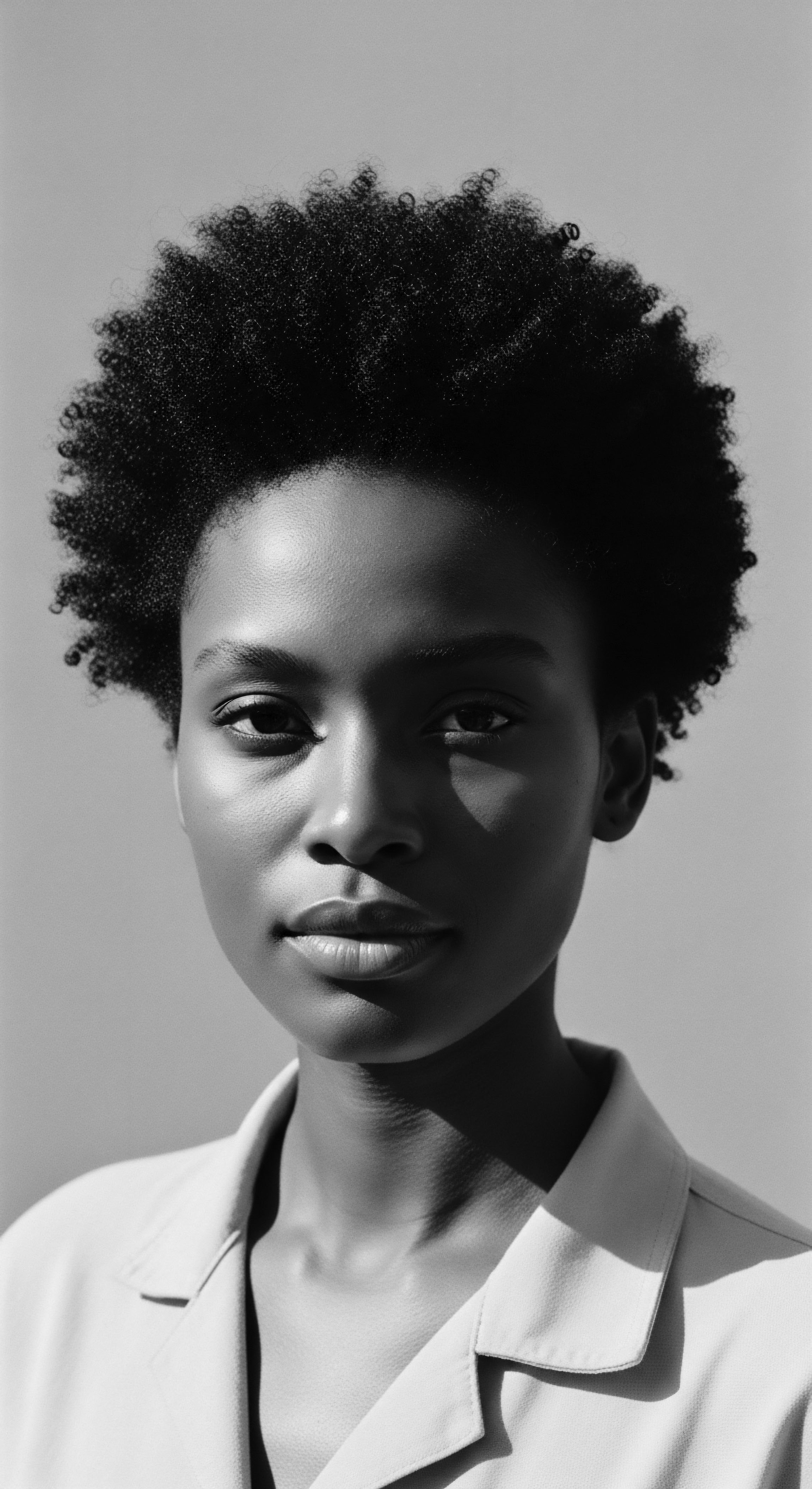
Relay
The Afro movement’s reclamation of cultural heritage through adornment represents a powerful relay, a passing of the torch from ancient traditions to contemporary expressions of identity. This is not a static phenomenon, but a dynamic, ongoing process where historical context informs modern practices, and scientific understanding meets ancestral wisdom. The very act of wearing textured hair in its natural state, adorned with symbols of Black pride, continues to speak volumes, challenging persistent biases and asserting a vibrant, living heritage.
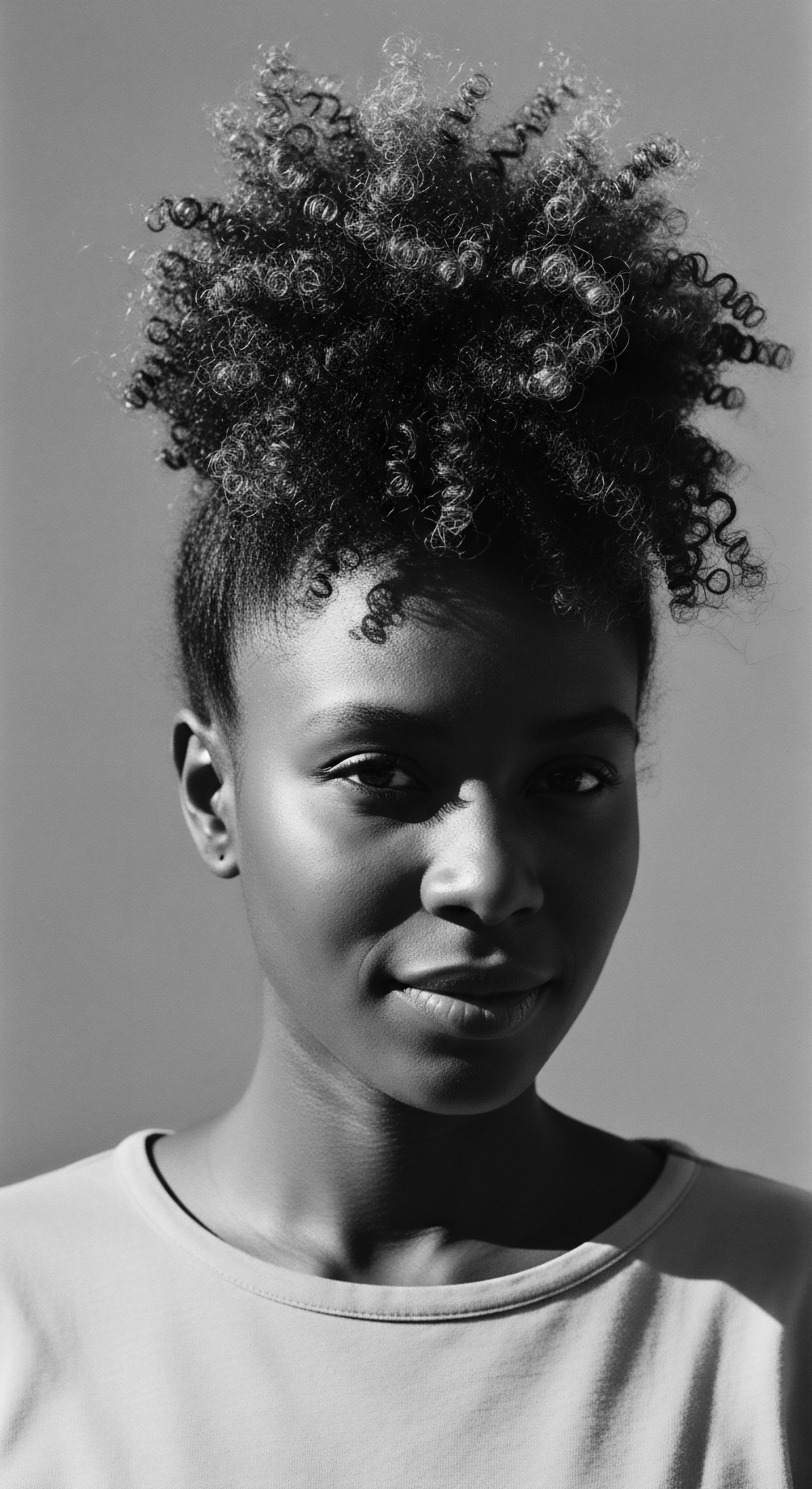
How Did the Afro Movement Influence Modern Hair Care Understanding?
The scientific understanding of textured hair has deepened considerably, in part due to the Afro movement’s emphasis on natural hair. Before this shift, much of mainstream hair science focused on straight hair, leaving textured hair largely misunderstood or pathologized (The Science of Black Hair, 2011). The movement brought forth a need for a scientific understanding that honored the unique properties of coily and kinky strands. Researchers now explore the particular challenges and strengths of highly coiled hair, such as its propensity for dryness and fragility at the bend points, alongside its remarkable volume and protective capabilities (The Science of Black Hair, 2011).
This scientific inquiry, spurred by cultural shifts, helped to validate traditional practices that intuitively provided moisture and protection. For instance, the practice of protective styling, with its deep roots in African traditions, has been shown scientifically to reduce breakage and promote length retention by minimizing manipulation and environmental exposure. This convergence of ancient wisdom and modern scientific validation strengthens the argument for ancestral practices as a sound basis for textured hair care.
The Afro movement did not simply re-introduce the Afro hairstyle; it spurred a broader recognition of all natural hair textures as legitimate and beautiful. This expanded beyond the spherical Afro to include intricate braids, locs, and twists, each carrying its own lineage and cultural meaning (Afriklens, 2024). The resurgence of Bantu knots, for example, a style with origins in Southern African tribes, gained renewed popularity in the 1990s and beyond, often worn as a stylistic choice and a nod to spiritual empowerment (ADJOAA, 2024). This demonstrates how the initial thrust of the Afro movement created space for a wider spectrum of traditional African hairstyles to be celebrated publicly.
The styles became cultural texts, broadcasting identity and defiance without needing words. This visual rhetoric continues to combat ingrained prejudices and to affirm Afrocentric beauty standards.
| Traditional Practice Cornrows as maps for escape (Copyright, 2022) |
| Afro Movement Reinterpretation Worn openly as a symbol of identity and resistance |
| Enduring Cultural Significance Visual markers of heritage and resilience, defying forced assimilation |
| Traditional Practice Hair picks as tools for volume and grooming (Africa Rebirth, 2022) |
| Afro Movement Reinterpretation Afro pick worn as a political emblem (often with a fist) |
| Enduring Cultural Significance Symbol of Black power and nationalism, a visible rejection of Eurocentric ideals |
| Traditional Practice Beads and ornaments signifying status/tribe (OkayAfrica, 2018) |
| Afro Movement Reinterpretation Incorporated into Afros, braids, and locs |
| Enduring Cultural Significance Reclaiming and celebrating ancestral aesthetics, asserting cultural pride |
| Traditional Practice The practices show a consistent history of Black hair as a site for self-expression and community connection. |
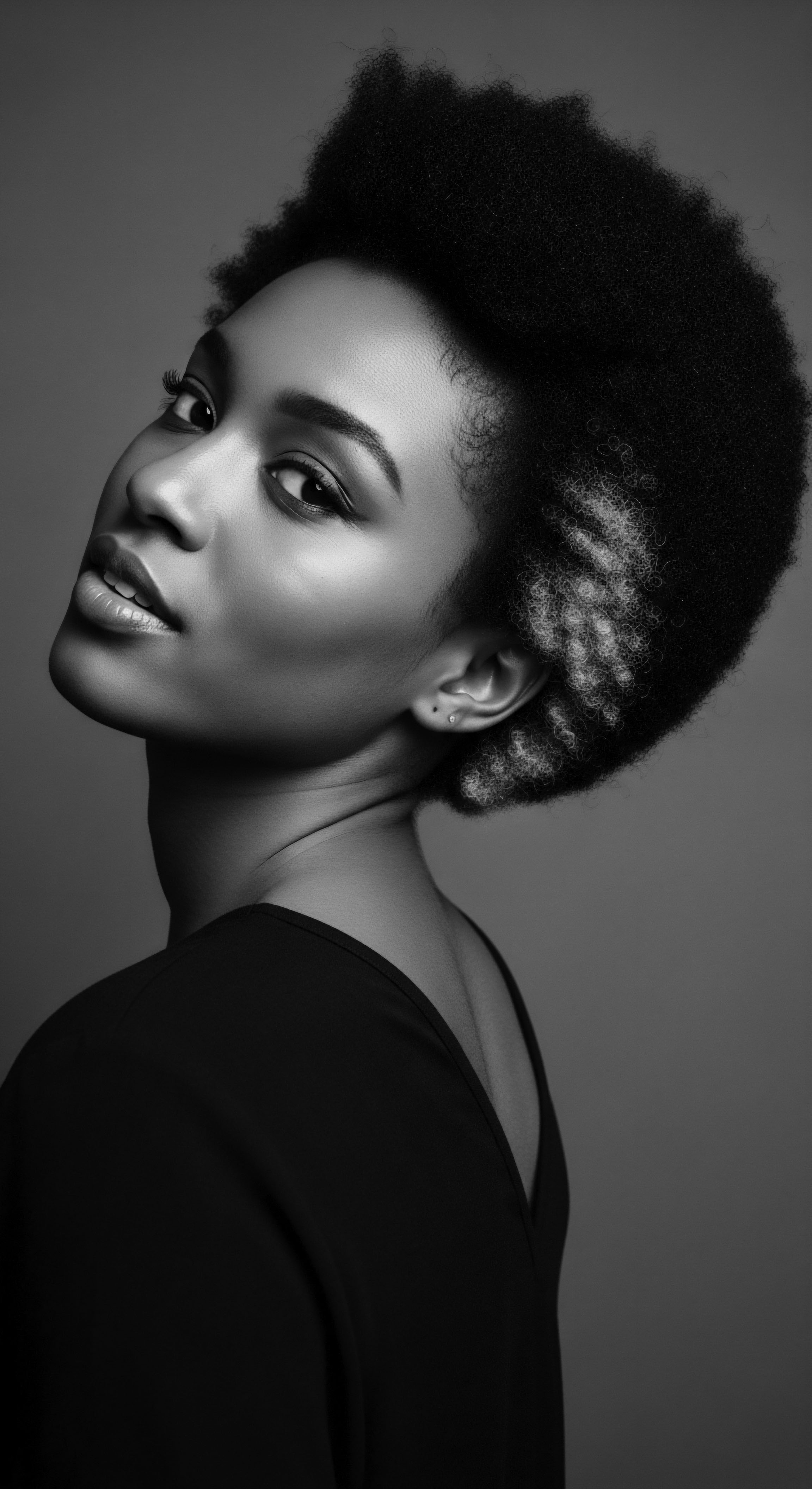
What are the Connections Between Hair Adornment and Societal Resistance?
The political dimensions of hair adornment during the Afro movement are undeniable. The Afro itself became a uniform of resistance, a declaration against systemic racism and a demand for equality (Essence Magazine, 2020). It challenged the notion that Black people needed to conform to white beauty standards to be accepted or considered professional.
This aesthetic rebellion, often termed the “Black is Beautiful” movement, directly counteracted the historical pressures to straighten hair, which were deeply tied to concepts of racial hierarchy (Jefferson Community College, 2023). The movement’s visual language, expressed through hair, underscored a powerful truth ❉ Black beauty, in its authentic form, possessed inherent worth and dignity.
A notable case illustrating this defiance is found in the life of Baroness Floella Benjamin. In 1977, while attending the Cannes Film Festival for her film premiere, Benjamin, a Trinidadian-British actress, wore braids carefully adorned with layered beads. This style, commonplace within Black communities and connected to longstanding African traditions, was met with unparalleled fascination and even attempts by crowds to grab her hair as souvenirs. Benjamin, acutely aware of the cultural value of her style from an early age, understood her choice as an extension of the radical Black power movements of the 1970s, where traditional styles became emblems of Black pride and beauty.
Her public display on an international stage, despite the unexpected reaction, reinforced the movement’s message of reclaiming African aesthetics, showing that ancient practices held a place of honor and relevance in the modern world. This public appearance was a subtle yet powerful act of resistance against a dominant culture that often overlooked or devalued Black hair. (Durosomo, 2018)
The effects of this relay continue to ripple through society. Anti-discrimination policies, such as the CROWN Act in the United States, which prohibits race-based hair discrimination, stand as legislative acknowledgements of the historical struggle and reclamation spearheaded by the Afro movement (ADJOAA, 2024). These legal protections signify a societal shift, however gradual, towards accepting and celebrating diverse hair textures. The movement did not merely change hairstyles; it changed laws, perceptions, and the very conversation around Black identity and adornment.
This journey, from ancestral reverence to forced suppression to conscious reclamation, demonstrates the profound and lasting impact of hair as a vehicle for cultural heritage. It continues to inspire self-acceptance and challenges a world still grappling with true inclusivity.
Hair became a living archive, communicating stories of ancestry, struggle, and triumph.
The communal practices of hair care also speak to a deep-seated desire for connection to heritage. These practices, passed down through generations, are not merely about external appearance. They represent a transfer of cultural knowledge, a connection to a lineage of resilience and beauty (Substack, 2025). This echoes ancient communal hair rituals, where family members gathered for hours, strengthening bonds while styling.
The modern natural hair movement, a direct descendant of the Afro movement, continues this tradition, with online platforms and communities serving as spaces for sharing wisdom and celebrating the diverse spectrum of textured hair (ADJOAA, 2024). This ongoing dialogue about hair care, styling, and identity ensures that the legacy of the Afro movement remains a vibrant, evolving force.

Reflection
The journey of textured hair through the Afro movement is a profound testament to the enduring human spirit and the power of heritage. What began as an elemental biological reality, the unique helix of textured hair, became a battleground for identity, a site of forced erasure, and ultimately, a powerful symbol of self-reclamation. The Afro movement, in its bold assertion of natural hair and ancestral adornment, did more than shift fashion trends. It ignited a deep remembering, a collective recognition that the strands atop one’s head held the echoes of generations, of resilience, artistry, and wisdom.
This movement did not merely ask for acceptance; it demanded a recognition of inherent beauty, a beauty that had been purposefully obscured by centuries of oppressive standards. The adornment of textured hair—from the proud, unfurled Afro to the intricately beaded braids and the symbolic Afro pick—became a living, breathing archive, a visual language proclaiming an undeniable connection to African ancestry. It reminds us that our hair is a living legacy, a continuous thread weaving us back to the source, and a constant invitation to honor the inherent brilliance of our own being.
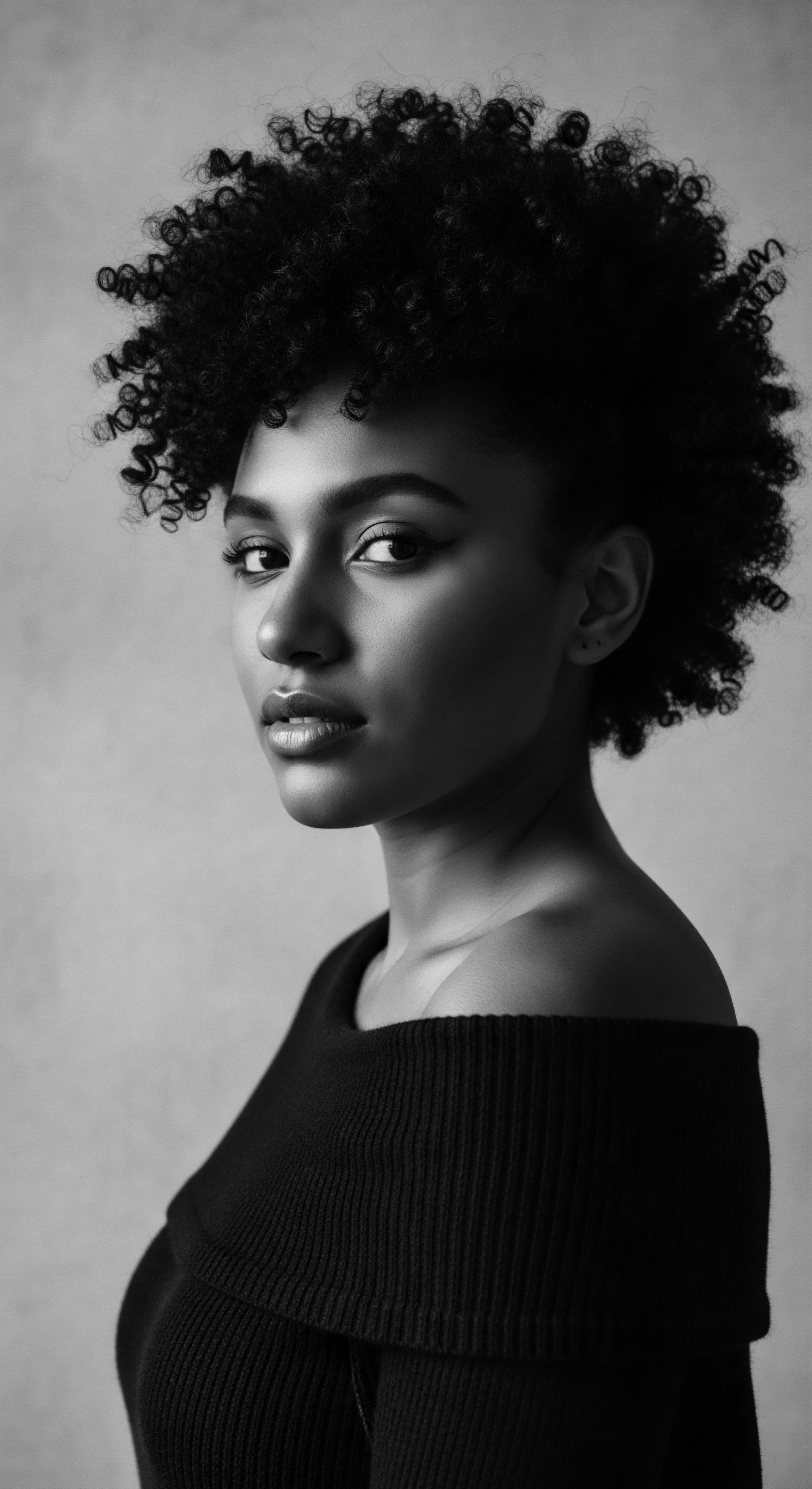
References
- Afriklens. (2024). African Hairstyles ❉ Cultural Significance and Legacy.
- ADJOAA. (2024). The Recent History of Hair in Afro-American Culture.
- Byrd, A. & Tharps, L. (2001). Hair Story ❉ Untangling the Roots of Black Hair in America. St. Martin’s Press.
- CBC Radio. (2021). Tangled Roots ❉ Decoding the history of Black Hair.
- colleen. (2023). Hair as a Symbol of Activism.
- Copyright. (2022). The Art of Healing ❉ A Nostalgic Ode to Black Hair Braiding.
- Dabiri, E. (2019). Twisted ❉ The Tangled History of Black Hair Culture. Harper Perennial.
- Durosomo, D. (2018). Reclaiming Tradition ❉ How Hair Beads Connect Us to Our History. OkayAfrica.
- EBONY Magazine. (2017). The History of the Afro.
- Essence. (2020). BHM ❉ Black Hair and Political Statements.
- Jefferson Community College. (2023). The Black Hair Experience ❉ An Identity Crisis.
- Noireônaturel. (2024). African braids ❉ a timeless heritage of beauty and cultural significance.
- Odele Beauty. (2021). 6 Things Everyone Should Know About Black Hair History.
- Refinery29. (2021). The Evolution Of The Natural Hair Movement.
- Sellox Blog. (2021). Ancient African Hair Growth Secrets For Healthy Hair.
- Smithsonian National Museum of African American History and Culture. (2023). Strands of Inspiration ❉ Exploring Black Identities through Hair.
- Substack. (2025). Ancestral Hair Rituals to Nourish Your Hair and Soul.
- The Science of Black Hair. (2011). The Science of Black Hair ❉ A Comprehensive Guide to Textured Hair Care.
